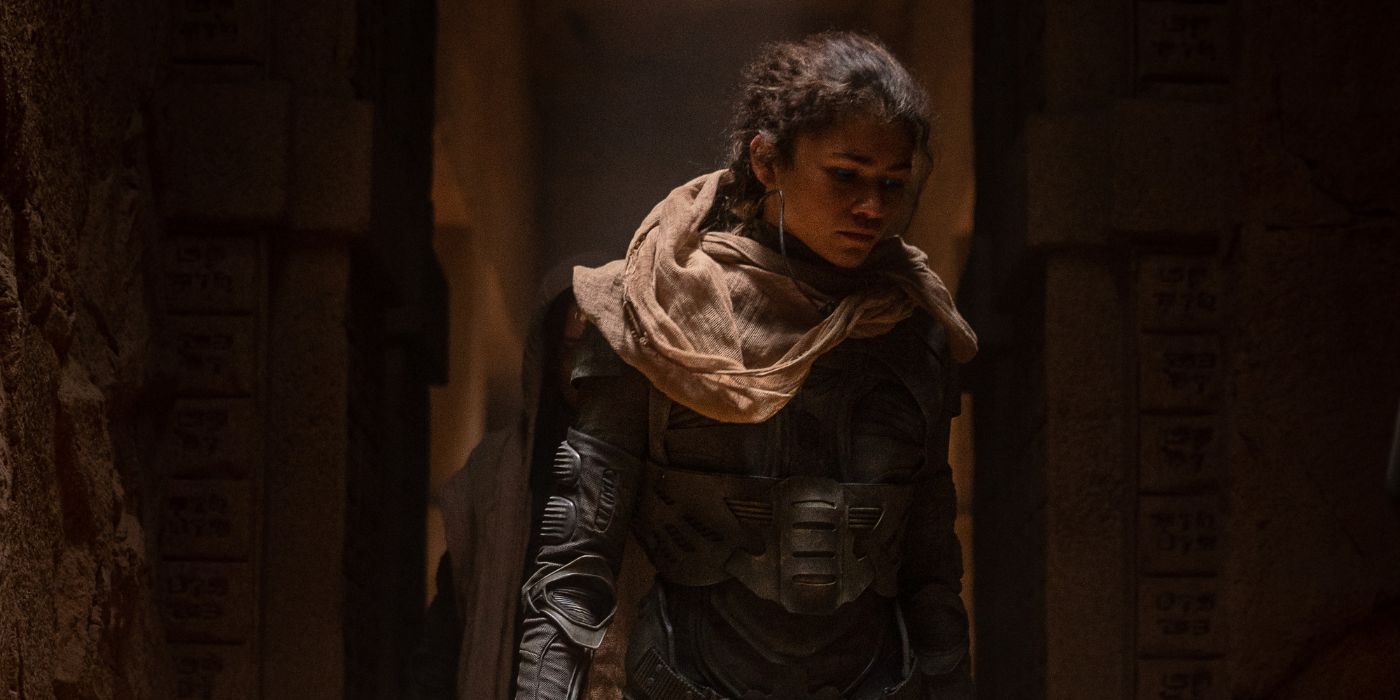Transforming a book into a cinematic masterpiece is a challenging endeavor, yet occasionally, it results in a perfect blend of storytelling and visual artistry. This is exemplified in Dune: Part Two, the concluding segment of Denis Villeneuve‘s adaptation of Frank Herbert‘s groundbreaking sci-fi novel. While adaptations often necessitate alterations, Villeneuve has made thoughtful modifications that many argue enhance the narrative, at times surpassing the original text. A standout alteration centers around the Fremen, the resilient indigenous inhabitants of Arrakis, who navigate the planet’s extreme conditions while contending with persistent threats from off-world colonizers. As Chani (Zendaya) and Stilgar (Javier Bardem) mentor Paul Atreides (Timothée Chalamet) in Fremen culture, audiences discover that the natives are split into two primary factions: the Northern Fremen and the Southern Fremen. This represents a significant shift from Herbert’s original portrayal of the Fremen, ultimately resulting in a richer narrative.
Understanding the Northern Fremen’s Struggle Against Colonization
At the climax of the first Dune film, Paul and his mother, Lady Jessica (Rebecca Ferguson), are forced to seek refuge in the unforgiving desert after House Harkonnen devastates the majority of House Atreides during the initial Battle of Arrakeen. As they traverse the landscape, they encounter the Fremen ? specifically, the Northern Fremen. This faction resides in proximity to Arrakeen, the political epicenter of power on Arrakis, making them particularly vulnerable to the consequences of decisions made by the imperial colonizers. The Northern Fremen are directly impacted by the ongoing colonization efforts and experience significant disruptions to their deep-rooted connection with the desert. Consequently, this leads to frequent confrontations between the Fremen and the imperial forces as the native population exercises their right to resist foreign domination and defend their natural resources.
In Part Two, Chani enlightens Paul about the unique challenges faced by the Northern Fremen, who are fewer in number and possess a more skeptical outlook on spiritual beliefs. Their experiences of destruction and exploitation have eroded their faith, leading to a cautious approach towards outsiders. Initially, they make it clear to Paul and Lady Jessica that they are not welcomed in Sietch Tabr. Over time, however, both mother and son earn their acceptance as part of the Fremen tribe. Particularly among the younger generation, there is a strong sense of doubt regarding prophecies, largely because they recognize that these beliefs were primarily implanted within their culture by the Bene Gesserit and their Reverend Mothers through initiatives like the Missionaria Protectiva. This program aimed to establish a belief in a messianic figure destined to rescue humanity from extinction; in the Fremen tradition, this figure is known as the Kwisatz Haderach. Unfortunately, this manipulation ultimately facilitated the entry of imperial colonizers into Arrakis, a planet rich in spice. Chani frequently expresses this concern, articulating that “If you want to control people, show them a messiah.” Despite their lack of influence, the younger Fremen remain fiercely dedicated to their community and are resolute in defending their people, even if it means confronting all adversaries.

Related
Anya Taylor-Joy Teases Her Involvement with ?Dune: Messiah?: ?I Am So Thrilled To Be a Part of It? [Exclusive]
The actress will appear in the film as Alia Atreides – the younger sister of Timothée Chalamet?s Paul Atreides.
Historically, the Fremen in the north experienced a brief period of relative tranquility with the colonizers during the events of the first Dune film. This was when House Atreides made efforts to establish friendly relations with them, even sending an envoy, the skilled swordsman and master-of-arms Duncan Idaho (Jason Momoa), to forge alliances. Regrettably, this alliance was short-lived, as House Atreides’ acceptance of control over Arrakis was intricately woven into a conspiracy involving the Imperium, the Bene Gesserit, and House Harkonnen aimed at their destruction. The Fremen’s plight worsened as Arrakis fell under the oppressive rule of House Harkonnen, who held hostile intentions towards them. Baron Vladimir Harkonnen (Stellan Skarsg?rd) orders his nephews Glossu Rabban (Dave Bautista) and Feyd-Rautha (Austin Butler) to annihilate the Fremen and extract the valuable spice at all costs.
Exploring the Southern Fremen: Their Numbers and Radical Beliefs
As the narrative progresses and Feyd-Rautha ascends as the new leader of House Harkonnen on Arrakis, tensions with the Fremen escalate, culminating in the catastrophic destruction of Sietch Tabr. The surviving Northern Fremen are then compelled to seek refuge among their Southern counterparts. Despite the devastation inflicted on their largest city, this moment becomes a turning point for the Fremen, as Paul gains the chance to unite them and address the most devoted among them. Having consumed the Water of Life, Paul experiences visions of his unborn sister, Alia Atreides (Anya Taylor-Joy), warning him of the impending jihad that will be waged in his name. This revelation solidifies his role as the prophesied savior, known to the Fremen as the Lisan al-Gaib.
While the Northern Fremen confront the immediate threat of colonization, the Southern Fremen face distinct challenges for survival. The southern regions of Arrakis are deemed inhospitable by the Harkonnens, who view the extreme heat and arid conditions as discouraging for habitation. They initially underestimate the Southern Fremen, believing that the sparse population there poses no significant threat. This misconception is profoundly flawed, as it underestimates the true strength of the Southern Fremen, who number in the millions and represent a formidable military force on the planet and across the galaxy. The Fremen are renowned for their exceptional combat skills, with every able-bodied member capable of fighting when called upon. Their total population is estimated to be between ten and fifteen million, positioning them as a powerful collective when organized, with the majority residing in the southern hemisphere of Arrakis.
In the southern regions, harsh environmental conditions necessitate that the Southern Fremen live primarily in underground Sietches, where they find refuge from the extreme heat. Under these circumstances, faith and spirituality play a pivotal role in their lives, with the prophecies surrounding the Lisan al-Gaib gaining considerable traction among them. Chani shares with Paul that Stilgar, the Fremen leader, may reside in the north, but his southern roots imbue him with deep religious convictions and unwavering belief in Paul as the prophesied savior. This fervor is mirrored in the beliefs of millions of Southern Fremen, who, upon witnessing Paul’s extraordinary abilities during an underground gathering, readily pledge their allegiance to him in the battle against the Harkonnens and the forces of Padishah Emperor Shaddam IV Corrino (Christopher Walken) in Arrakeen. Their faith is so potent that Paul recognizes he cannot fully control them, foreshadowing a jihad that will spread throughout the galaxy in his name, as forewarned by Alia.
How ‘Dune: Part Two’ Enriches the Fremen’s Characterization
Within the initial Dune film, Duke Leto Atreides (Oscar Isaac) discusses the concept of “desert power” as a strategic approach to governance over Arrakis. While this notion may initially seem amusing, it carries significant weight. Leto posits that the true strength of Arrakis lies not solely in its spice production but also in the native Fremen population and the indigenous fauna, including the iconic sandworms. He recognizes that the harsh desert environment has shaped the Fremen into a resilient, resourceful, and fiercely independent society. Thus, cultivating alliances with the Fremen is paramount for anyone looking to control the planet, as it is wiser to gain the loyalty of those who could pose a formidable challenge rather than engage in open conflict. This diplomatic strategy starkly contrasts with the brutish tactics employed by the Harkonnens, and Part Two confirms Leto’s assertion that the Fremen are indeed the genuine power of Arrakis.
By delineating the Fremen into two distinct factions, Denis Villeneuve effectively illustrates that while Duke Leto’s insights regarding desert power hold merit, realizing this potential is an intricate endeavor. In the original novel, the Fremen are predominantly homogeneous, scattered throughout the desert or residing in Sietches, leading to little variation in their beliefs and customs. However, from an anthropological standpoint, it is improbable that a population dispersed across an entire planet would share identical cultural practices, especially over a span of more than ten thousand years. Villeneuve’s storytelling innovation not only enhances plausibility but also provides depth to the Fremen characters absent in the novels. The introduction of two factions with distinct backgrounds creates a rich tapestry of experiences and religious beliefs, which are crucial elements of Fremen culture and could incite future conflicts both internally and against external threats. Chani and Stilgar exemplify this dichotomy; while Chani remains cautious about fully embracing Paul due to his outsider status, Stilgar wholeheartedly acknowledges Paul as the Lisan al-Gaib, reinforcing the diverse perspectives within the Fremen community.
This division among the Fremen also paves the way for the development of subsequent Dune films. For instance, in Dune Messiah, Paul?s reign as Emperor is repeatedly challenged, and many of his diplomatic choices are perceived as betrayals by certain Fremen factions, which may lead to conspiracies against him. Later, in Children of Dune, a desert figure known as The Preacher emerges to destabilize the rule of Paul’s offspring, Leto II and Ghanima Atreides. This scenario sets the stage for further exploration of the Fremen factions, with Northern Fremen possibly opposing Paul?s rule in favor of a more harmonious existence with their planet, while Southern Fremen’s unwavering faith could be swayed by compelling evidence. Ultimately, the introduction of these diverging factions of Fremen enriches the narrative complexity and storytelling potential for future Dune installments, even before they enter production.
Dune: Part Two is now available to stream on Netflix in the U.S.
Watch on Netflix





